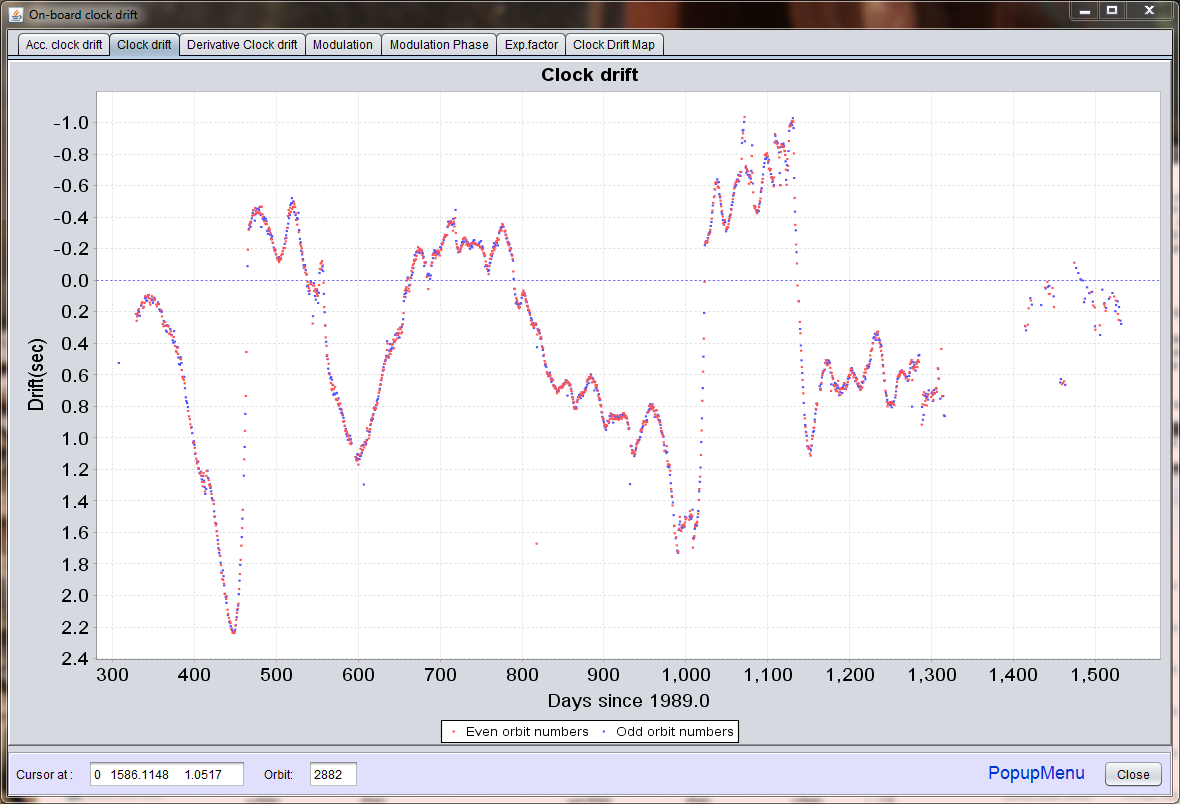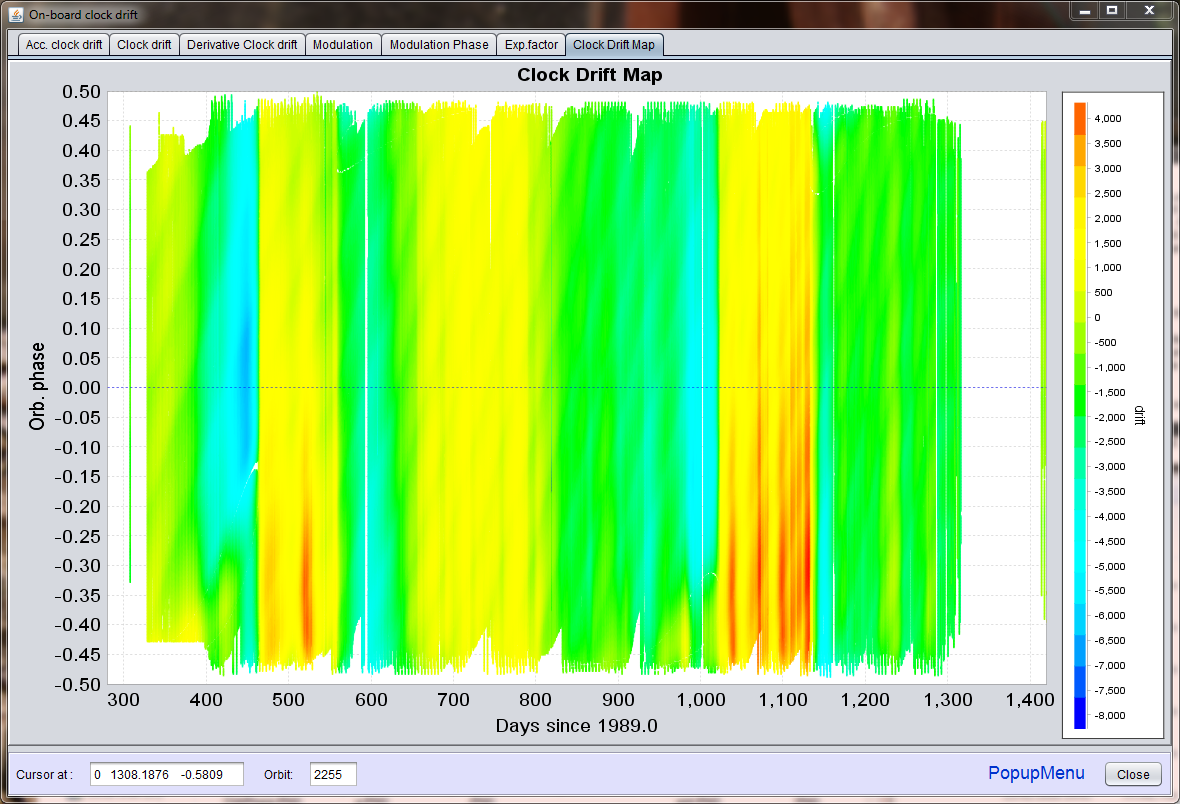The on-board clock
Hipparcos was, during operations, in continuous contact with one of three ground stations. This provided a direct link between on-board time and ground-station time, which, after correction for time delays, allowed for an assessment and analysis of the on-board clock drift. This clock drift contained several components, the most obvious one being the exposure by solar radiation. The large-scale variation in this exposure was due to the ellipticity of the Earth orbit and solar eclipses. As a comparison with the chart shown below, there is also a display included of this exposure factor.

Eclipses also caused an evolution in the clock drift over an orbit. In addition, as the clock was situated fairly close to an outside wall on the spacecraft, the drifts also showed a clear dependence on the rotation phase of the satellite. Some of these effects can be seen in the chart below.

Other charts included show the second derivative of the accumulated drift, which represents the net in- or outflow of energy to the satellite, and the modulation coefficients and phase. The latter still leave a lot to be explained.